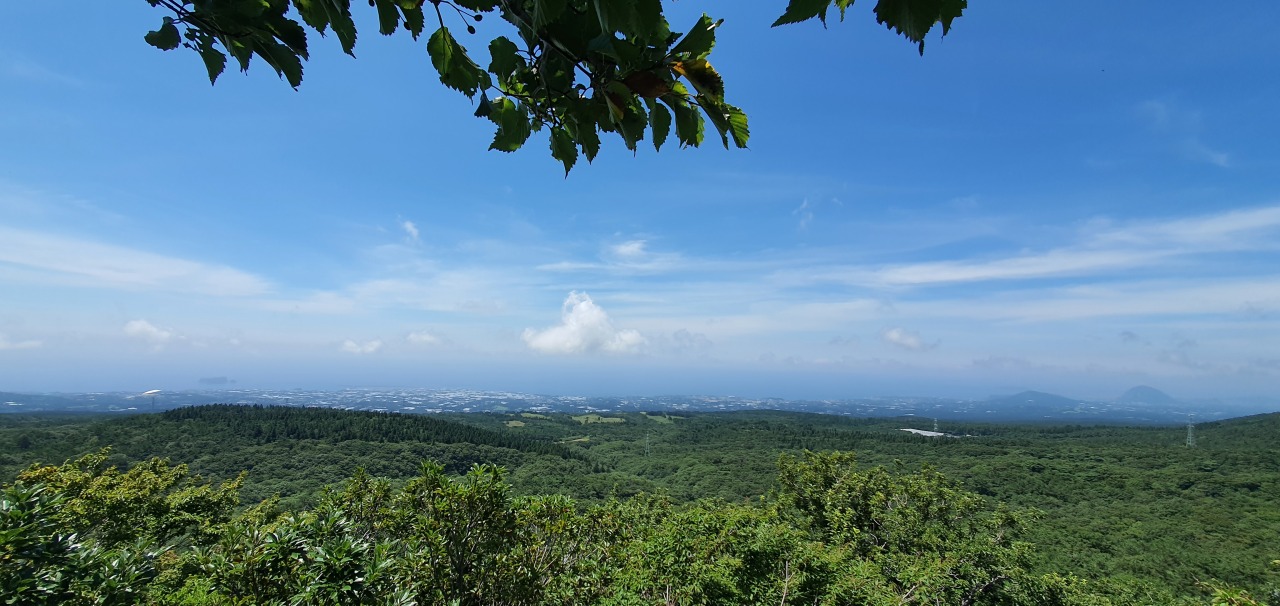 |
An aerial view of Jeju Island (Kim Hae-yeon/ The Korea Herald) |
South Korea’s Jejudo, an oval shaped island located in the Korea Strait between Korea and Japan, is teeming with life. Formed through an underwater volcanic eruption some 1.8 million years ago, basalt shaped and covered the land, with Hallasan standing at its core.
Yet death pays a crucial role to the island’s survival. English writer Virginia Woolf’s observation on life and death in humans also applies to mother nature: “Someone has to die in order that the rest of us should value life more.”
If you are wondering how the island’s rocky terrain, covered in lush green vegetation, survived being exposed to volcanic lava, the answer is to be found in the name “gotjawal.”
An official dictionary on Jeju dialect maintained by the Jeju provincial government defines gotjawal as an unmanned and unapproachable forest mixed with trees and bushes -- “Got” meaning forest and “jawal,” thickets or rubble. Jeju locals have traditionally called forests on rocky ground gotjawal.
Gotjawal have three key features, according to forest experts today -- soilless rocky areas, some 750 plants specific to the ecosystem and rainwater penetration deep down to the aquifer.
Gotjawal has a unique life cycle. Small and weak trees that grow through the rocks turn into thorny bushes as a protection mechanism. Vines then climb onto the bushes, and the shade formed by the vines causes some trees to receive less sunlight than others. When a tree dies, the place is left vacant and is more exposed. The spot then becomes a favorable environment for short trees, once again, to survive, with the dead tree nourishing the new.
Accounting for 5 percent of Jeju’s land area, gotjawal forests are scattered along the east-west axis of the island, and concentrated between the island’s midland and coastal areas.
Gotjawal have traditionally served as a buffer between the inhabited coastal areas and the mountainous regions used as ranches for horse grazing, with the average altitude ranging from 200 meters to 600 meters.
A skyrocketing number of travelers to Jeju Island since the early 2002 was followed by urban development and construction of commercial facilities. Developers bulldozed some 29.6 square kilometers, or 31.9 percent, of gotjawal land, according to a Ministry of Environment report in 2012. The two main reasons for the destruction of gotjawal have been the construction of golf courses and tourism-related facilities. Once destroyed, gotjawal cannot be regenerated.
Four gotjawal regions have been singled out for their well-preserved conditions -- Hankyung-Andeok Gotjawal and Aewol Gotjawal in the west, Jocheon- Hamdeok Gotjawal and Gujawa-Seongsan Gotjawal in the east.
Below are The Korea Herald’s recommendations for learning about Jeju’s natural environment and the island’s history.
Hwansang Forest Gotjawal Park
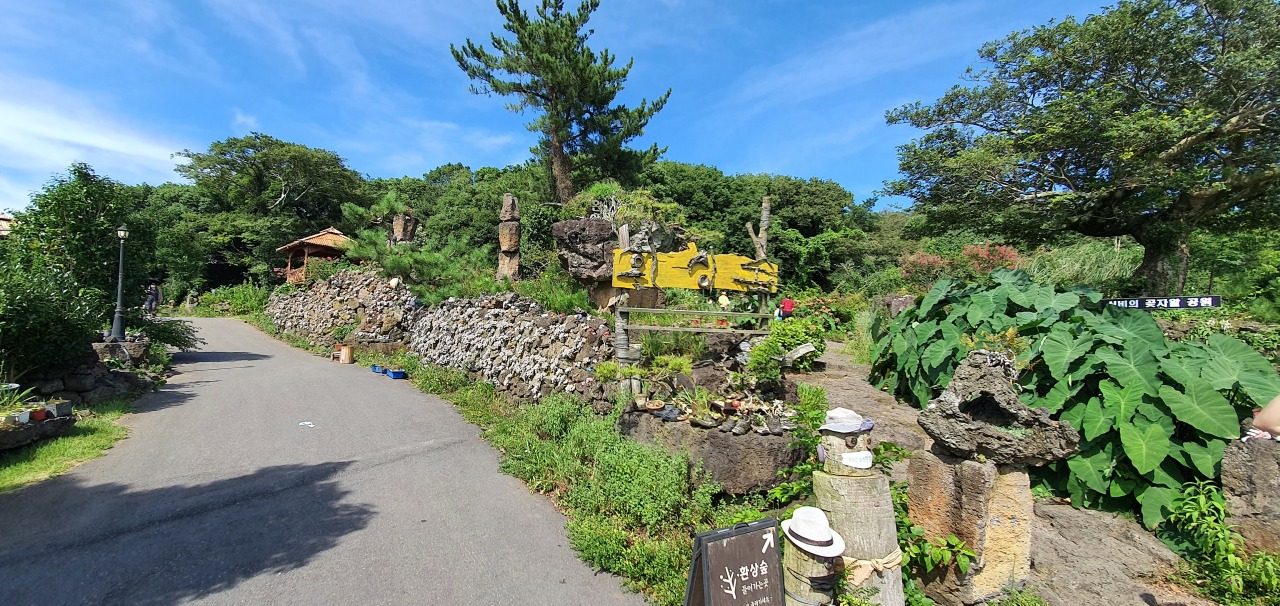 |
Hwansang Forest Gotjawal Park (Kim Hae-yeon/The Korea Herald) |
Hwansang Forest Gotjawal Park, located in Hankyung-myeon, was once a farm that also sold firewood at the local markets in Moseulpo. The park is a reliable starting point for first-time visitors of gotjawal, since all tours are led by a forest guide.
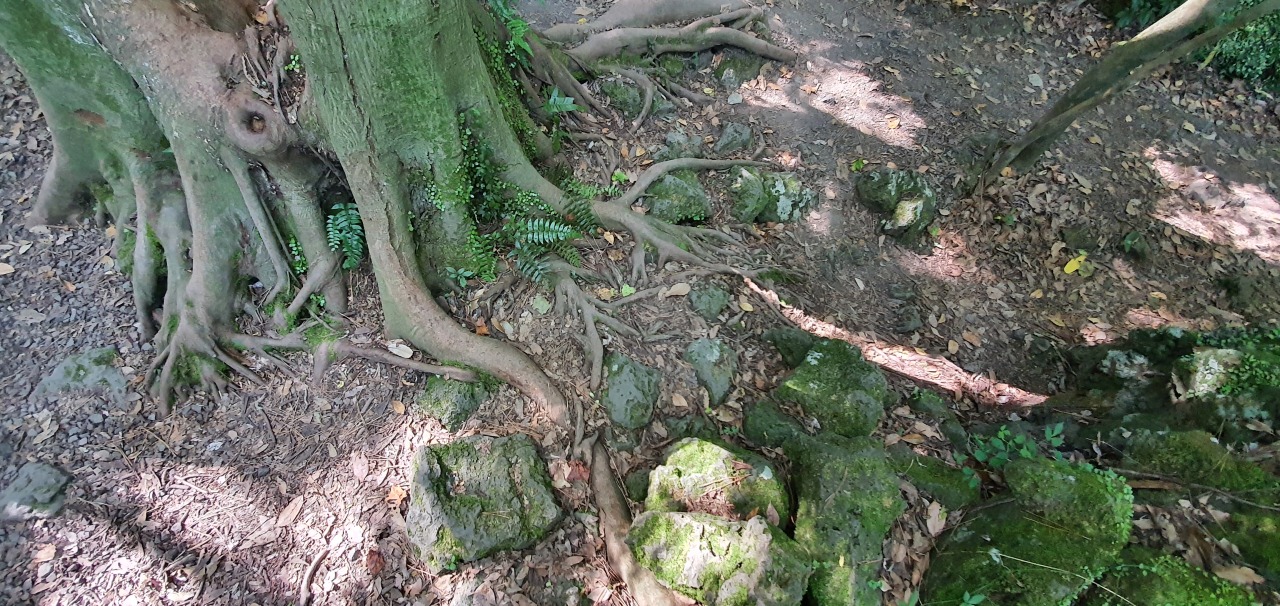 |
Tree roots are exposed above ground. (Kim Hae-yeon/The Korea Herald) |
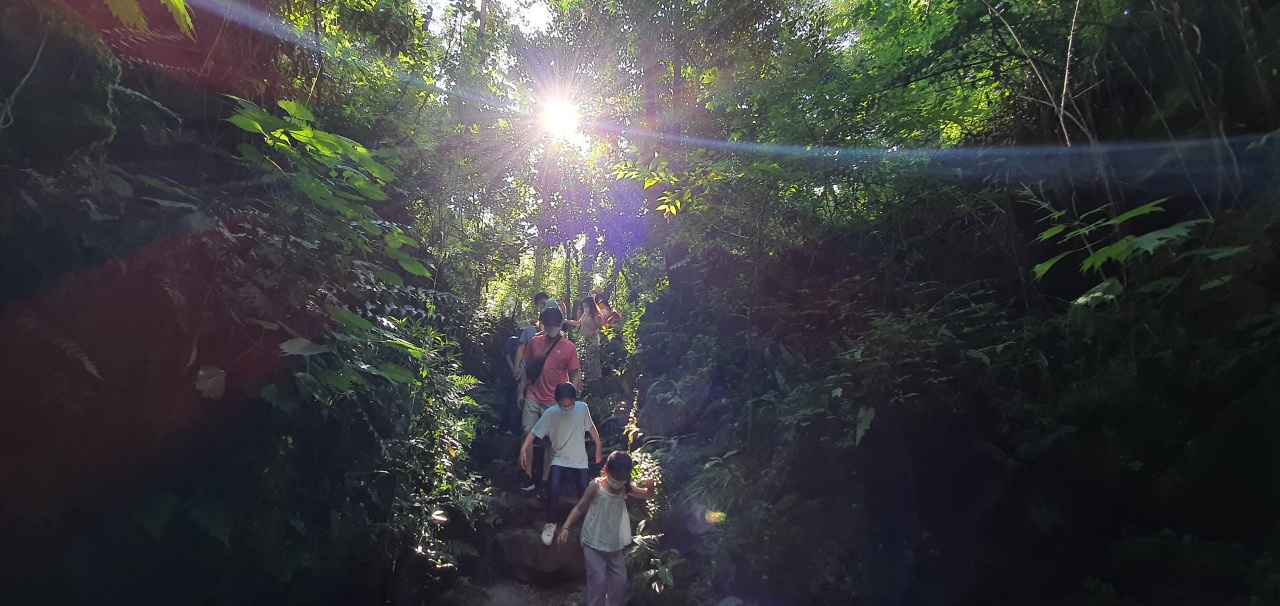 |
Visitors at Hwansang Forest Gotjawal Park walk down to one of the biggest “sumgol” zones at the park. (Kim Hae-yeon/The Korea Herald) |
A unique geological feature found at the park is “sumgol,” a wind hole or breathing hole. Air flows through the cracks in the ground that maintains a relatively constant temperature between 12-15 degrees Celsius throughout the year, sumgol emits a cool breeze in the summer and warm air in the winter, making it a perfect habitat for a variety of plant species, including ferns.
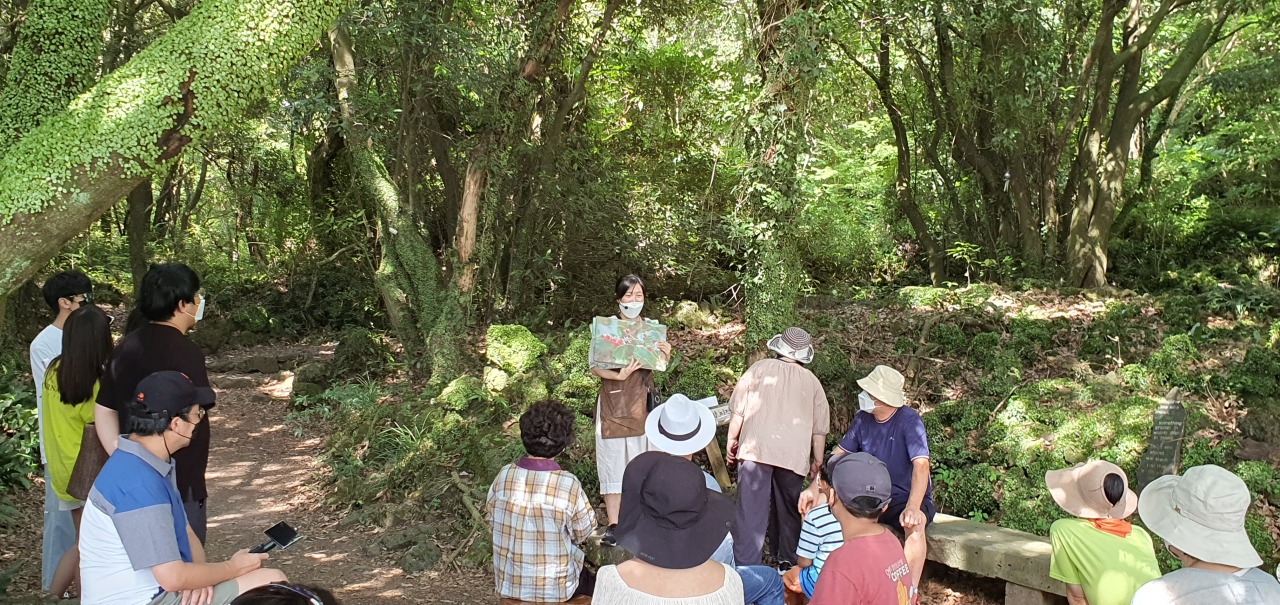 |
Forest reader Lee Ji-yeong explains the ecosystem of Gotjawal to visitors at Hwansang Forest Gotjawal Park on July 29. (Kim Hae-yeon/The Korea Herald) |
“You will be able to see how the species change their shape and form to mix and survive with others,” forest leader Lee Ji-yeong, also the chief executive of the park, told The Korea Herald. With 12 tour guides working at the forest, some 150,000 visitors come to the park each year, official statistics show.
Hwasun Gotjawal
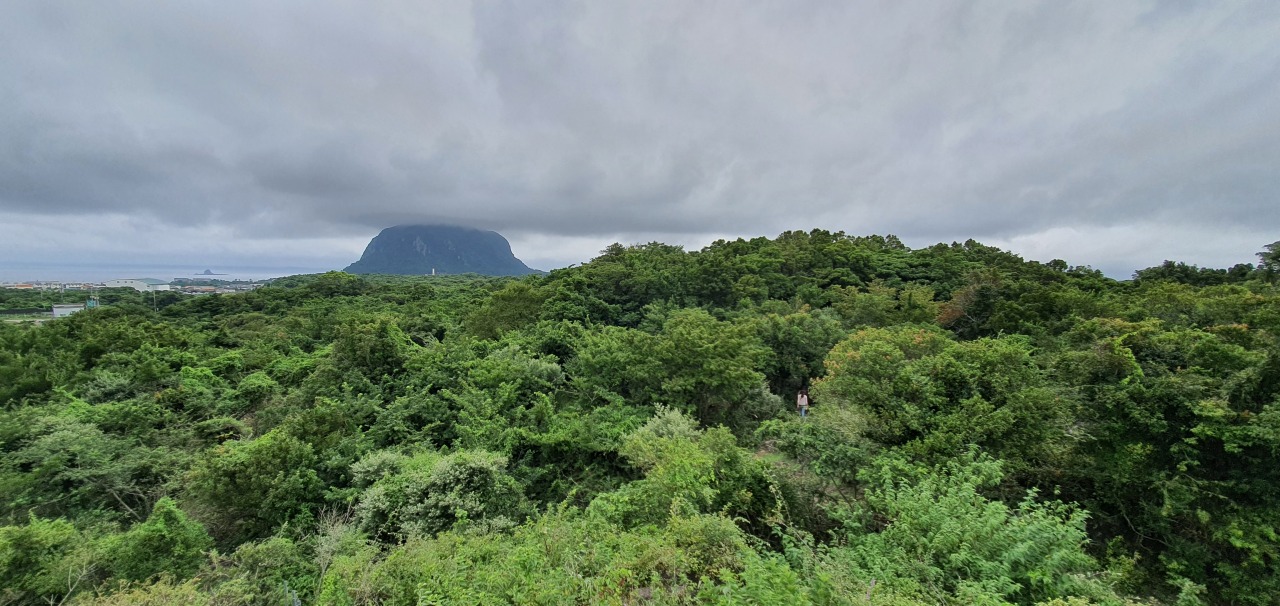 |
Sanbangsan is seen from the Hwasun Gotjawal’s observatory deck. (Kim Hae-yeon/The Korea Herald) |
The Hwasun Gotjawal terrain located in Andeok-myeon was formed by lava flows emitted from Golleun Oreum at an altitude of 492 meters. The lava flows extend toward the coast near Sanbangsan, measuring a total of 9 kilometers in length.
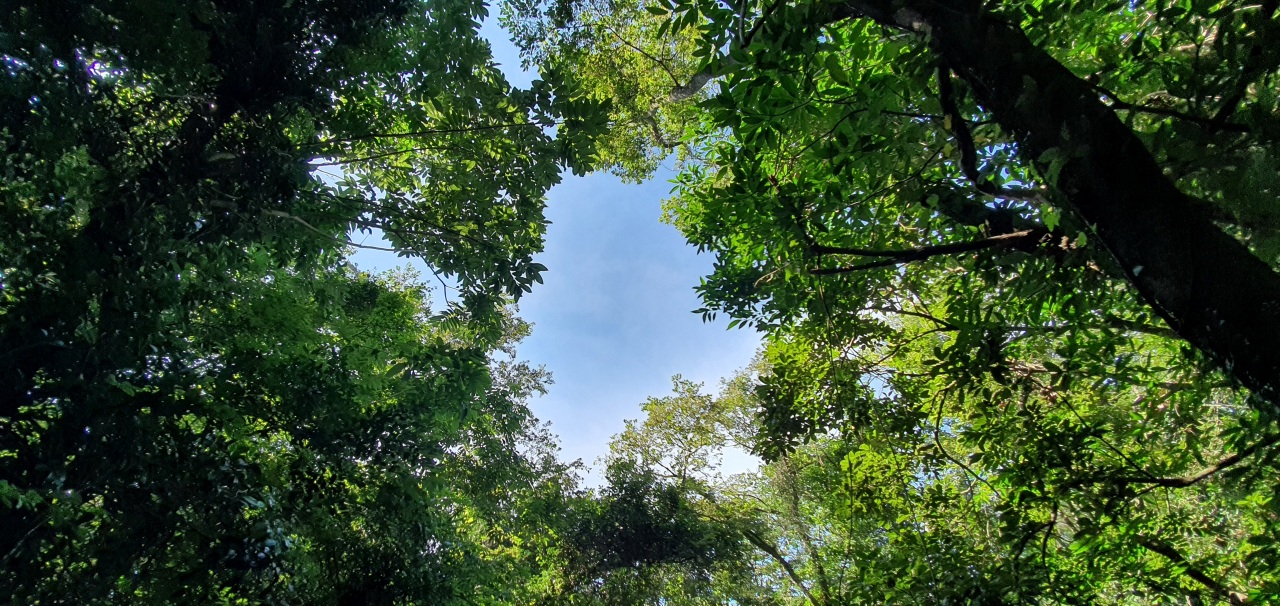 |
The empty sky holes in Gotjawal indicate places where a tree has recently died. (Kim Hae-yeon/The Korea Herald) |
Hwansun Gotjawal has more than 50 species of flora and fauna, some of them on the endangered list.
The forest’s eco-trail is divided into three main loops that are accessible year-round. Although the terrain is quite rough with large boulders and overgrown vegetation, sturdy walkways have been designed to minimize the environmental impact.
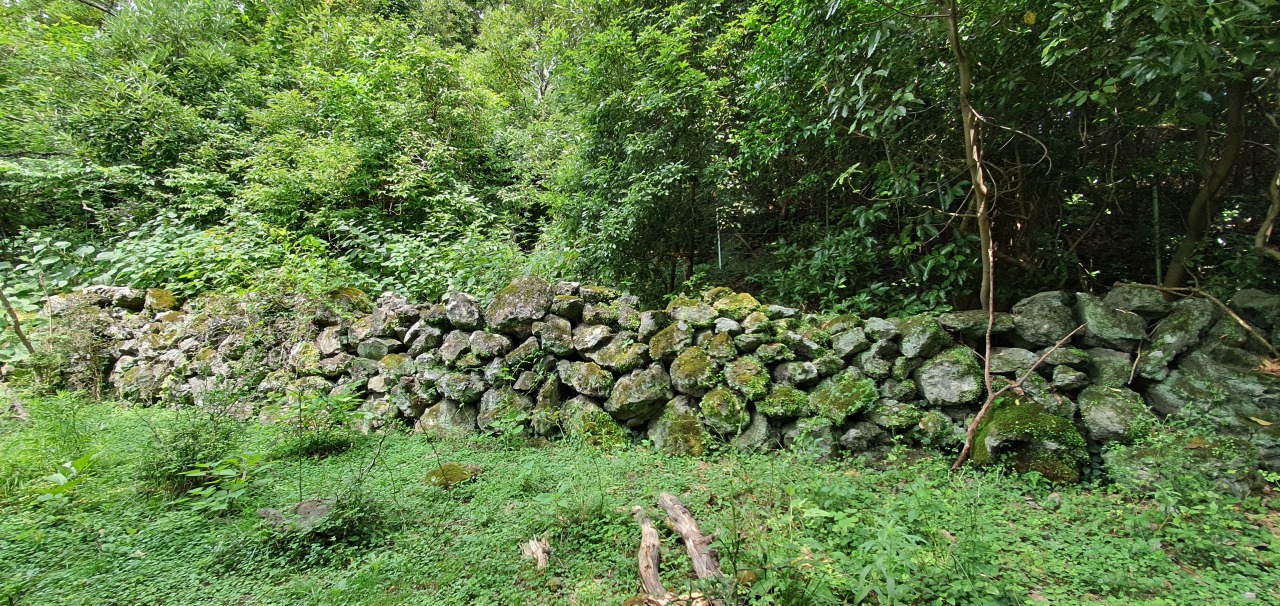 |
Jatdam Stone Walls in Gotjawal regions used to demarcate grazing land for livestock farming. (Kim Hae-yeon/The Korea Herald) |
As you walk deeper into the lush forest, you will stumble upon remnants of history, such as the Jatdam Stone Walls that demarcated grazing pasture for livestock farming, and military barracks built by the Japanese army to block the US military from landing on Jeju during the Japanese colonial era.
Gallery exhibition, “The eternal forest, Got”
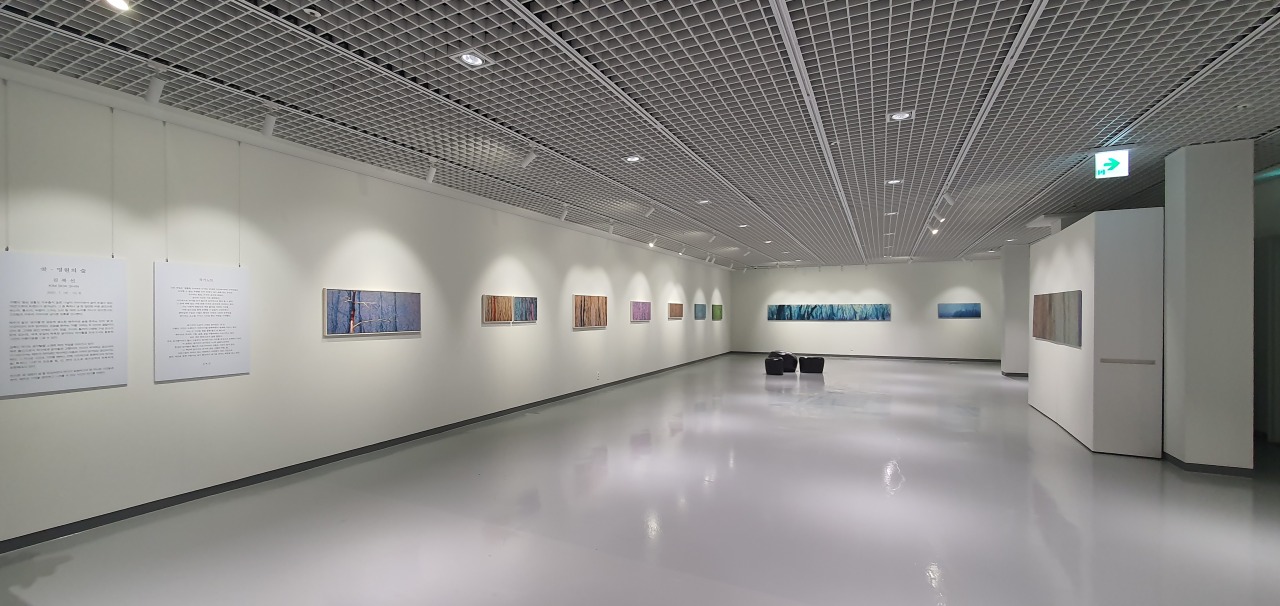 |
Exhibition “The eternal forest, Got” at Podo Hotel’s Gallery Soyi (Kim Hae-yeon/The Korea Herald) |
A 10-minute drive from Hwasun Gotjawal is a special exhibition solely dedicated to gotjawal paintings, at Podo Hotel’s Gallery Soyi.
The exhibition “The eternal forest, Got” presents a series of paintings by artist Kim Bok-shin based on observations and reimaginations of gotjawal and their trees.
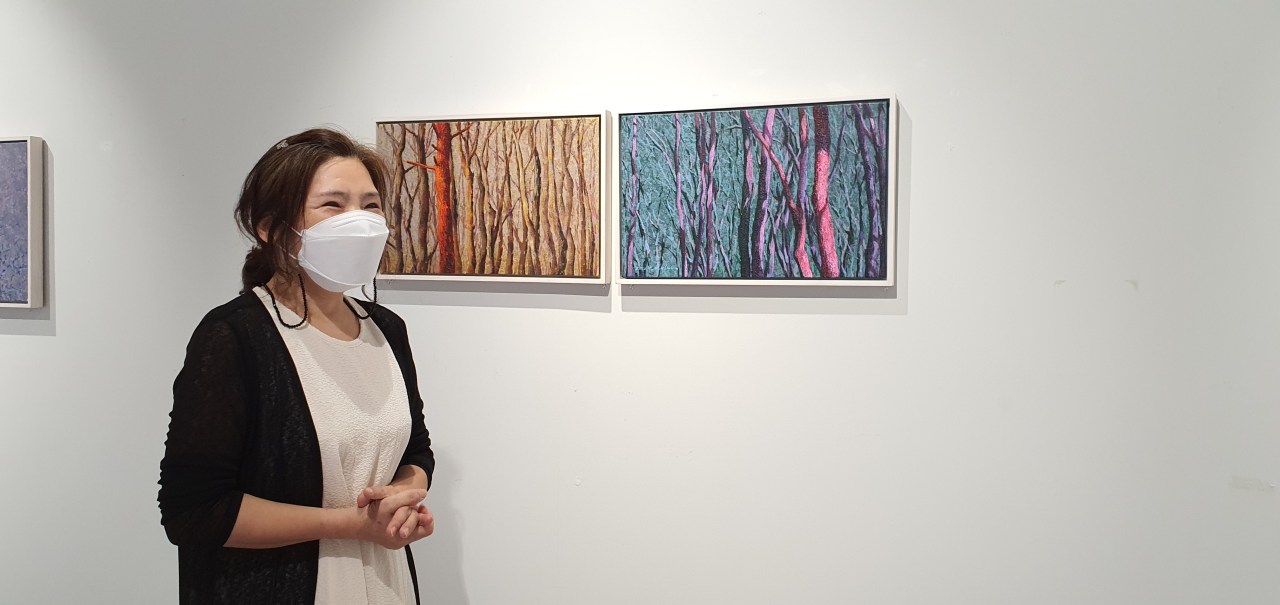 |
Artist Kim Bok-shin explains her work at Gallery Soyi on July 30. (Kim Hae-yeon/The Korea Herald) |
“I used pointillism in my paintings of gotjawal, each dot representing the happy and sad moments in Jeju’s history,” Kim, a Jeju native, told The Korea Herald.
Although Jeju Island’s beautiful beaches are popular today, Kim grew up in a part of Jeju surrounded by dense forests.
“Got was everything to me and my family when we went through difficult times,” Kim said.
In Kim’s paintings, specks of light contrast with the otherwise dark forests, hinting at the artist’s wishes for the preservation of gotjawal.
Opened on July 16, the exhibition runs until Oct. 6.
Gotjawal Ecology Experience Museum
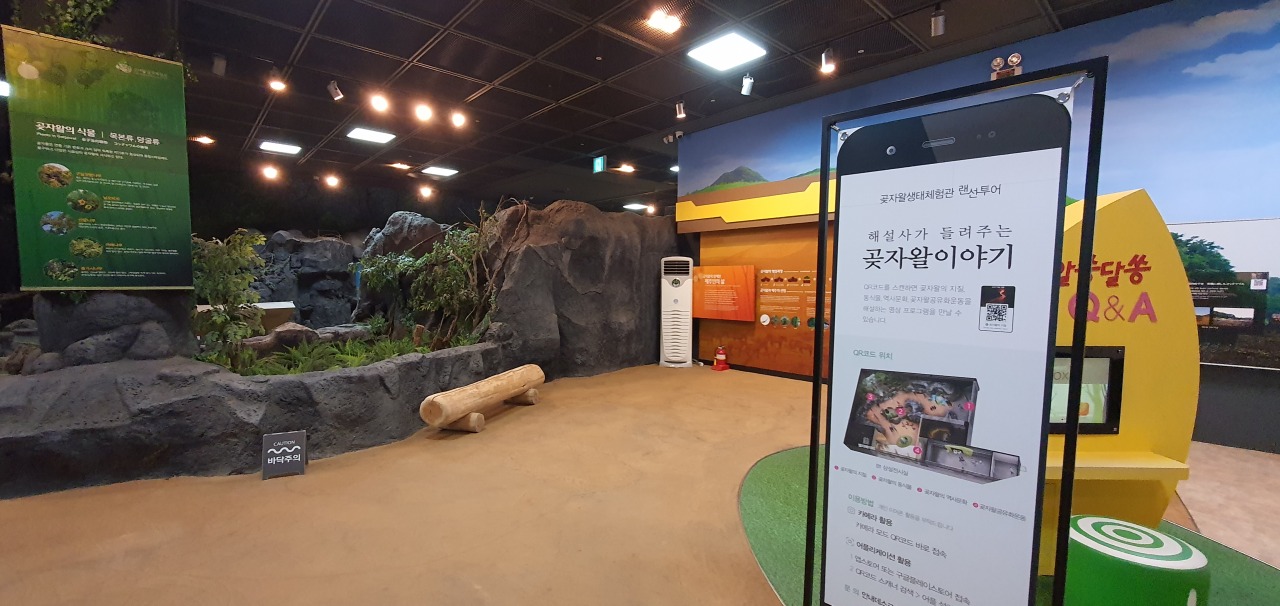 |
Gotjawal Ecology Experience Museum is run by the Gotjawal Trust of Jeju. (Kim Hae-yeon/The Korea Herald) |
The Gotjawal Ecology Experience Museum located in Jocheon-eup, lets you explore the research and efforts that have been put into protecting gotjawal.
The museum is managed and operated by the Gotjawal Trust of Jeju, a nonprofit organization established in 2007 by locals interested in their preservation. The trust is currently undertaking a 10-year-plan to turn privately owned gotjawal forests into public land.
With around 16 billion won ($14 million) in donations received so far, the trust has turned 0.86 square kilometers of privately-owned gotjawal land into public land.
The trust’s projects are also include mapping out plans to better maintain gotjawal by replacing and cleaning up groundwater supplies.
The museum is open from 9 a.m. to 5 p.m., seven days a week.
By Kim Hae-yeon (
hykim@heraldcorp.com)

















![[Weekender] Korea's traditional sauce culture gains global recognition](http://res.heraldm.com/phpwas/restmb_idxmake.php?idx=644&simg=/content/image/2024/11/21/20241121050153_0.jpg)
